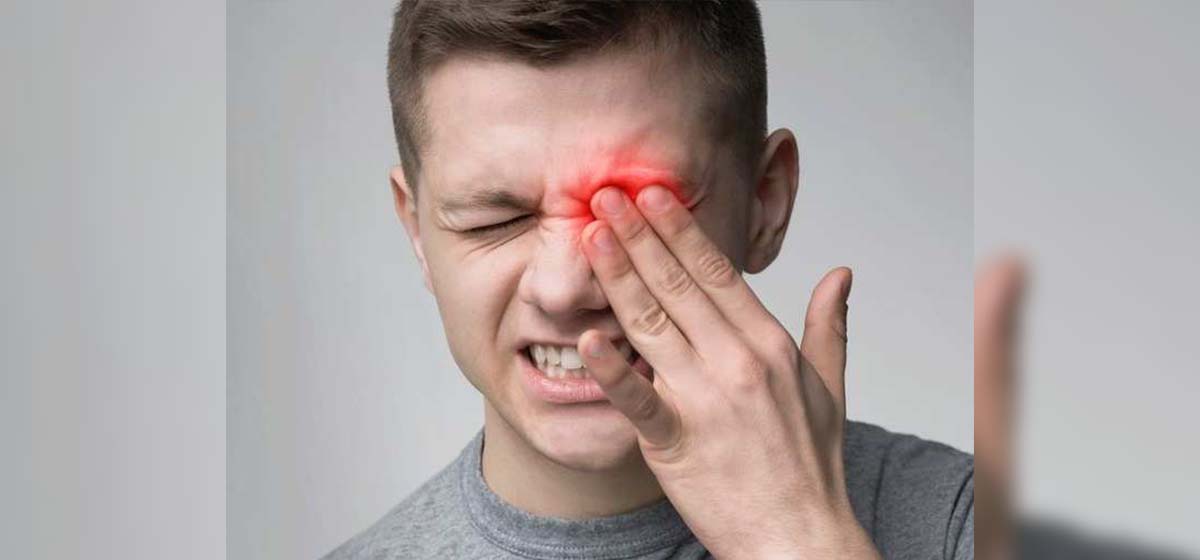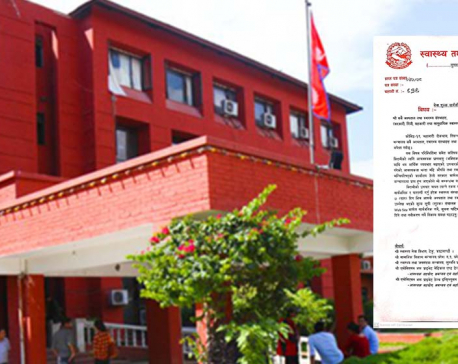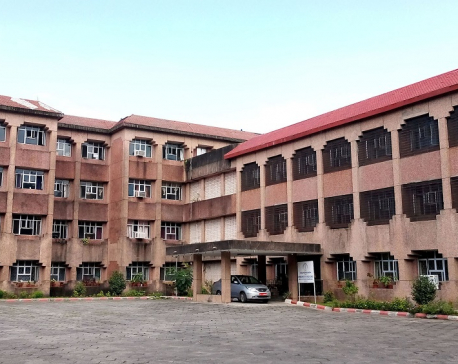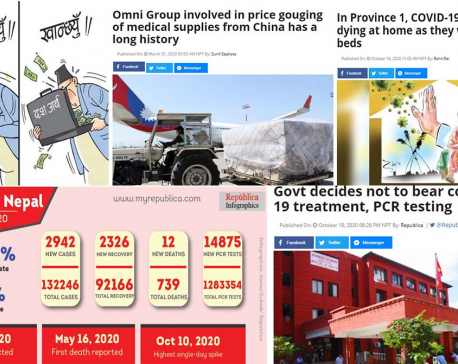
OR
Four dead, four lose eyesight due to black fungus infection in Nepal
Published On: July 4, 2021 12:40 PM NPT By: Pabitra Sunar

KATHMANDU, July 4: So far, four people have died and four others have lost their eyesight due to the black fungus or mucormycosis infection in Nepal.
Two individuals infected with mucormycosis were treated at Tribhuvan University Teaching Hospital (TUTH) at Maharajgunj in Kathmandu. They were a 50 years old woman and a 58 years old man from Janakpur.
The medics and ophthalmologists at the hospital removed their eyes a week ago, according to the hospital. Likewise, one of the two eyes of a 31 years old man had to be removed during the treatment of black fungus at Bir Hospital in Kathmandu one month ago. Likewise, the eyes of a youth were removed and referred to TUTH for further treatment. With this, four individuals have lost their eyesight due to the black fungus infection in Nepal so far. “After surgery, their health condition is gradually improving,” said Otolaryngologist Dr Rabindra Bhakta Pradananga. Timely treatment of the infection prevents loss of eyesight.
There are currently 15 patients of black fungus undergoing treatment at TUTH alone. Of them one died a month ago.
Likewise, two of the youths suffering from the infection were taken back to their homes by their relatives after failing to provide further treatment to them. They might also have died, according to Dr Pradananga.
Similarly, a young man succumbed to black fungus at Star Hospital in Kathmandu a month ago, according to Senior Oculoplastic Surgeon Dr Rohit Sainju at Tilganga Hospital.
There are currently 22 patients of black fungus in Nepal, according to the health ministry.
“Symptoms of black fungus include runny nose, sneezing, and dry nose when the fungus reaches the nose and the eyes swell, vision fades and eyes get red when it reaches the eye. As soon as any of these symptoms appear, eye or nose-ear and throat treatment can be done by consulting a doctor,” Dr Saiju explains.
The fungus mainly affects eyes, nose and brain.
The infection is mainly seen in COVID-19 patients with cancer, diabetes and in those treated on oxygen support and with low immunity within three weeks of the COVID-19 infection.
You May Like This

Health ministry directs hospitals to make treatment cost of COVID-19 patients public
KATHMANDU, June 2: The Ministry of Health and Population (MoHP) has instructed the hospitals across the country to make public... Read More...

BPKIHS installing additional medical equipment to provide better COVID-19 treatment
KATHMANDU, Oct 31: The BP Koirala Institute of Health Sciences (BPKIHS) is installing additional medical equipment in the hospital to... Read More...

As Oli government limits its role to counting deaths during the greatest public health crisis, people are dying at an alarming rate
Experts say the government has decided to shred the constitution ... Read More...








Just In
- Govt urges ISPs to settle outstanding tax liabilities amid internet service disruptions
- Cases of banking fraud up in Nawalparasi
- IGP Kunwar holds meeting with Indonesian National Police Chief Murti
- Nepal faces severe disruptions in internet service after ISPs fail to pay the Indian vendor
- Innovation Fund will be set up for IT sector expansion: PM
- NEPSE loses 7.31 points, daily turnover slides down to Rs 4.13 billion
- President Paudel summons budget session on May 10
- Over 100,000 tourists visit Nepal monthly on average











Leave A Comment